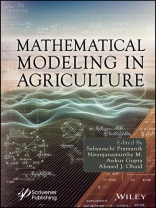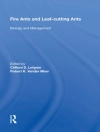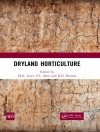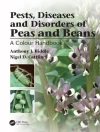The main goal of the book is to explore the idea behind data modeling in smart agriculture using information and communication technologies and tools to make agricultural practices more functional, fruitful and profitable.
The research in the book looks at the likelihood and level of use of implemented technological components with regard to the adoption of different precision agricultural technologies. To identify the variables affecting farmers’ choices to embrace more precise technology, zero-inflated Poisson and negative binomial count data regression models were utilized. Outcomes from the count data analysis of a random sample of various farm operators show that various aspects, including farm dimension, farmer demographics, soil texture, urban impacts, farmer position of liabilities, and position of the farm in a state, were significantly associated with the approval severity and likelihood of precision farming technologies.
Farm management information systems (FMIS) have constantly advanced in complexity as they have incorporated new technology, the most recent of which is the internet. However, few FMIS have fully tapped into the internet’s possibilities, and the newly developing idea of precision agriculture receives little or no support in the FMIS that are now being sold. FMIS for precision agriculture must meet a few more criteria beyond those of regular FMIS, which increases the technological complexity of these systems’ deployment in a number of ways. In order to construct an FMIS that meet these extra needs, the authors here evaluated various cutting-edge web-based methods. The goal was to determine the requirements that precision agriculture placed on FMIS.
Table des matières
Preface xiii
1 Analyzing the Impact of Food Safety Regulations on Agricultural Supply Chains: A Mathematical Modeling Perspective 1
Nimit Kumar, Shwetha M.S., Govind Shay Sharma, Nitin Ubale, Nuzhat Fatima Rizvi and Dharmesh Dhabliya
1.1 Introduction 2
1.2 Resources and Techniques 4
1.3 Results and Analysis 6
1.3.1 Knowledge, Application, and Obstacles to Food Modeling 6
1.3.2 Obstacles to Our Company’s Use of Mathematical Modeling 7
1.4 Conclusion 12
References 13
2 Modeling the Effects of Land Degradation on Agricultural Productivity: Implications for Legal and Policy Interventions 17
Amit Verma, Istita Auddy, Murli Manohar Gour, Dhwani Bartwal, Sukhvinder Singh Dari and Ankur Gupta
2.1 Introduction 18
2.2 Materials and Procedures 20
2.2.1 Content of Minerals 23
2.3 Results and Analysis 24
2.4 Conclusion 28
References 29
3 Mathematical Modeling of Carbon Sequestration in Agricultural Soils: Implications for Climate Change Mitigation Policies 33
Kailash Malode, Brijpal Singh Rajawat, Amar Shankar S., Ravindra Kumar, Deepti Khubalkar and Sabyasachi Pramanik
3.1 Introduction 34
3.2 Resources and Techniques 35
3.2.1 Reference Trial 36
3.2.2 Interviews with Agriculturists in London Suburb and Liverpool 38
3.2.2.1 Overall Explanation of the Sampled Region and Organized Interviews 38
3.2.3 Online Tools for Calculating CF 38
3.3 Results 40
3.3.1 Agricultural Data as Model I/P 40
3.3.1.1 Case Study 40
3.3.1.2 From Discussions with Farmers 41
3.3.2 Farms’ Estimated GHG Emissions 43
3.3.3 Effects of Mitigating Measures 44
3.4. Discussion 44
3.4.1 Evaluating the Possible Effects of Mitigating Measures 46
3.5 Conclusions 47
References 48
4 Optimizing Livestock Feed Formulation for Sustainable Agriculture: A Mathematical Modeling Approach 51
Rutul Patel, Upasana, Ashutosh Pattanaik, Deepak Kumar, Ahmar Afaq and Soma Bag
4.1 Introduction 52
4.2 Managing Swine Herds Using Modeling 53
4.2.1 System of a Sow Herd 53
4.2.2 Major Statistical Techniques Used in Modeling Cattle Herds 55
4.2.2.1 Literature Review on Herd Modeling for Cattle 55
4.2.2.2 Models for Simulation 56
4.2.2.3 Models for Optimization 56
4.2.2.4 The Integration of Simulation and Optimization 57
4.3 Models of a Sow Herd 58
4.3.1 Chosen Models 58
4.3.2 Input Criteria 59
4.3.2.1 Parameters Used as Inputs in Optimization Models 59
4.3.2.2 Parameters Used as Inputs in Simulation Techniques 60
4.3.3 Results from the Models 61
4.3.4 The Models’ Validation 62
4.3.5 Opportunities for Implementation and Integration 63
4.3.6 Management of Risk 64
4.3.7 Additional Submissions and Literature Review 64
4.4 Discussion 65
4.5 Conclusions 68
References 69
5 Modeling the Economic Impact of Agricultural Regulations: A Case Study on Environmental Compliance Costs 81
Vikesh Rami, Sunil Kumar, Gautham Krishna, Abhinav, Sukhvinder Singh Dari and Dharmesh Dhabliya
5.1 Introduction 82
5.2 Mechanisms Study Time and Location 83
5.3 Sampling 85
5.4 Analysis, Both Physical and Chemical 85
5.5 Module for Water Quality 87
5.6 Particulate Phosphorus and Suspended Solids 87
5.7 Calculation of PP 88
5.8 Model Caliphy 89
5.9 Scientifications Described by the Model 94
5.10 Simulation of Sediment Trap 96
5.11 Pumping Profile Modifications Simulation 98
5.12 Conclusion 98
References 99
6 Quantifying the Economic Benefits of Precision Agriculture Technologies: A Mathematical Modeling Study 103
Deepak Kumar, Apexaben Rathod, Sachchida Nand Singh, Meena Y. R., Rushil Chandra and Ankur Gupta
6.1 Introduction 104
6.2 Method and Materials 107
6.3 Conclusion and Results 110
6.4 Conclusions 112
References 113
7 Optimizing Resource Allocation in Agribusinesses: A Mathematical Modeling Approach Considering Legal Factors 115
Vishvendra Singh, Navghan Mahida, Anand Janardan Madane, Sudhakar Reddy, Parth Sharma and Sabyasachi Pramanik
Introduction 116
Methods 119
A Framework for the Transmission and Command
of Brucellosis: A Case Study Overview 120
Brucellosis Nominal Transmission Modeling 120
Modeling Disease Costs and Control Capabilities 124
Creating a Cost Model and Confronting the Challenge of Control Design 125
Analysis, Design, and Parameterization Techniques 127
Overview of the Control and Surveillance Design 128
Network Model Identification and Validation for Zoonoses 129
Results 130
Indicative Model 131
Control Strategy Modeling 135
Optimized Approaches 137
Parameterization 143
Discussion 143
Wide-Ranging Perspectives on High-Performance Control 144
Talking About Parameterzing Models 147
Conclusion 148
References 150
8 Modeling the Dynamics of Agricultural Cooperatives and Legal Implications for Farmer Organizations 153
Shiv Shankar Shankar, Prashantkumar Zala, Ashutosh Awasthi, Ezhilarasan G., Sukhvinder Singh Dari and Soma Bag
8.1 Introduction 154
8.2 Resources and Techniques 155
8.3 Conclusion 160
References 160
9 Optimizing Agroforestry Systems for Sustainable Agriculture: A Mathematical Modeling Approach 163
Beemkumar Nagappan, Aakriti Chauhan, Chandni Mori, Praveen Kumar Singh, Shilpa Sharma and Sabyasachi Pramanik
9.1 Introduction 164
9.2 Relationships Between Structure and Activity (SAR) and the Level of Toxicological Involvement 169
9.3 Threshold Approaches 174
9.4 Reciprocal Analysis 178
9.5 Chemical-Specific Adjustments 183
Conclusion 184
References 185
10 Simulating the Effects of Climate-Smart Agriculture Practices on Farm Resilience: A Mathematical Modeling Approach 189
Kiran K. S., Meenakshi Dheer, Mukesh Laichattiwar, Devendra Pal Singh, Vaidehi Pareek and Soma Bag
10.1 Introduction 190
10.2 Definitions, Concepts, and Methods for the Analytical Framework 191
10.3 Results 194
10.4 Consequences for Political Implementations 203
10.5 Advanced Research 204
10.6 Conclusions 206
References 207
11 Modeling the Dynamics of Agrochemical Regulations and Impacts on Agricultural Productivity 211
Hannah Jessie Rani, Akanchha Singh, Aishwary Awasthi, Ashwani Rawat, Nuvita Kalra and Ankur Gupta
11.1 Introduction 212
11.2 Resources and Techniques 213
11.3 Results 216
11.4 Discussion 217
11.5 Conclusion 219
References 220
12 Optimizing Energy Consumption in Greenhouse Production: A Mathematical Modeling Approach 223
Beemkumar Nagappan, Arun Gupta, Sachin Gupta, Diksha Nautiyal, Aarti Kalnawat and Dharmesh Dhabliya
12.1 Introduction 224
12.2 Literature Review 227
12.3 The Creation of Mathematical Models a Range of Models 229
12.4 Formulation of a Model 231
12.5 Modeling of Groundwater Quality 242
12.6 Conclusion 244
References 244
13 Analyzing the Economic and Legal Impacts of Intellectual Property Rights on Plant Breeding Innovations: A Mathematical Modeling Study 249
Gopalakrishna K., Bhirgu Raj Maurya, Rajeev Kumar, Sushila Arya, Himanshi Bhatia and Ankur Gupta
13.1 Introduction 250
13.2 Competition Postulates 251
13.3 Transparent Competition 251
13.3.1 Effect of Competitiveness-Density 252
13.3.2 Changes to the Population’s Size Structure 252
13.4 Concurrence Inter-Specific 253
13.4.1 Adding Damage 254
13.4.2 Neighborhood Function 256
13.4.3 Innovative Design and Analysis 256
13.5 Dynamic Plant Growth and Competition Models 256
13.5.1 Dynamic Population 258
13.6 Aspects Impacting the Result of Competitiveness 259
13.7 Crop-Weed Competition Models Applied in Practical Situations 260
13.8 Conclusion 261
References 262
14 Simulating the Effects of Land Use Regulations on Agricultural Land Values: A Mathematical Modeling Study 265
Ashwani Rawat, Ramachandran T., Yogesh Chandra Gupta, Manoj Kumar Mishra, Gabriela Michael and Sabyasachi Pramanik
14.1 Introduction 266
14.2 Models of Component Agricultural Systems 267
14.3 Present-Day Farming System Frameworks in Relation to Certain Application Situations 284
14.4 Discussion 286
References 290
15 Simulating the Effects of Agricultural Land Fragmentation on Farm Effciency: A Mathematical Modeling Analysis 295
Diksha Nautiyal, Manjunath H. R., Praveen Kumar Singh, Umesh Kumar Tripathi, Saurabh Raj and Soma Bag
15.1 Introduction 296
15.2 Conceptual Foundation 297
15.3 Resources and Techniques Household Polls 299
15.4 Results 306
15.5 Discussion 313
15.6 Conclusions 316
References 317
16 Simulating the Effects of Land Use Policies on Agricultural Productivity: A Mathematical Modeling Perspective 321
Vinaya Kumar Yadav, Sushila Arya, Asha Rajiv R., Devendra Pal Singh, Siddharth Ranka and Dharmesh Dhabliya
16.1 Introduction 322
16.2 Upcoming Applications of Next Gen Farming Frameworks 326
16.3 Envisioned Consumers of the Application Chain Beneficiaries 331
16.4 Conclusion and Research Plan 340
References 341
17 Quantifying the Economic Benefits of Agricultural Extension Services: A Mathematical Modeling Analysis 345
Rajeev Kumar, Satendra Kumar, Pradeepa P., Akanchha Singh, Karun Sanjaya and Ankur Gupta
17.1 Introduction 346
17.2 Creating New Models for the Future: A Demand-Driven, Prospective Strategy 347
17.3 Potential Improvements to Model Elements 355
17.4 Conclusions 367
References 368
18 Modeling the Impact of Agricultural Investment Incentives on Rural Development: Legal and Economic Perspectives 373
Dal Chandra, Manoj Kumar Mishra, Ankit Pant, Ahmadi Begum, Sukhvinder Singh Dari and Dharmesh Dhabliya
18.1 Introduction 374
18.2 Approach 376
18.3 Conversation 384
18.4 Conclusion 390
References 391
19 Optimizing Harvest Scheduling in Agriculture: A Mathematical Modeling Approach Considering Legal Restrictions 397
Heejeebu Shanmukha Viswanath, Umesh Kumar Tripathi, Minnu Sasi, Kishore Kumar Pedapenki, Prashant Dhage and Ankur Gupta
19.1 Initialization 398
19.2 Structure of the System 406
19.3 Irrigation Community Event 409
19.4 Assessment and Authentication 412
19.5 Conclusions 416
References 418
20 Quantifying the Economic Benefits of Agricultural Data Sharing: A Mathematical Modeling Perspective 421
Aruno Raj Singh, Vinaya Kumar Yadav, Laishram Zurika, Dasarathy A. K., Abhishekh Benedict and Dharmesh Dhabliya
20.1 Introduction 422
20.2 Model for Data Mining Process 423
20.3 Techniques for Machine Learning 424
20.4 Website Tools 429
20.5 Case Study: Grading of Mushrooms 431
20.6 Conclusion 432
References 433
Index 437
A propos de l’auteur
Sabyasachi Pramanik, Ph D, is an associate professor in the Department of Computer Science and Engineering, Haldia Institute of Technology, India. He has many publications in technical conferences and journals, as well as online book chapter contributions. He is also a reviewer for and on numerous editorial boards for technical journals. He has authored one book and edited nine books, including books for Scrivener Publishing.
Niranjanamurthy M., Ph D, is an assistant professor in the Department of Artificial Intelligence and Machine Learning, BMS Institute of Technology and Management, Yelahanka, Bengalore, India. He has over ten years of teaching experience and two years of industry experience as a software engineer. He has published five books and is working on numerous books for Scrivener Publishing. He has published 54 research papers in various scientific refereed journals and filed ten patents, with two granted so far. He is a reviewer for more than 20 journals and has received numerous awards.
Ankur Gupta, MTech, is an assistant professor in the Department of Computer Science and Engineering at Vaish College of Engineering, Rohtak, India. He has many publications in scientific journals and conferences and online book chapter contributions.
Ahmed J. Obaid, Ph D, is an assistant professor in the Department of Computer Science, Faculty of Computer Science and Mathematics, University of Kufa, Iraq. He has over 14 years of teaching experience and is a board member on numerous scientific journals. He has published over 75 journal research articles, five book chapters, 15 conference papers, 10 conference proceedings, and has edited eight books.












